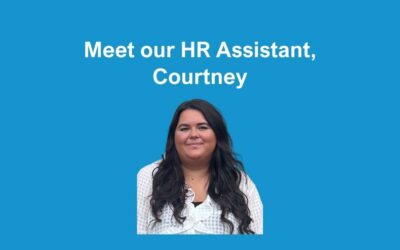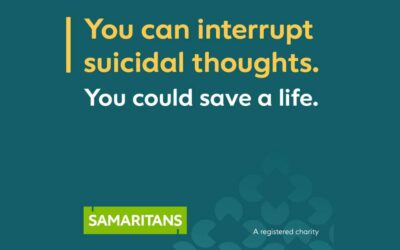The rising costs of running a business, including increased national insurance contributions for employers, have placed significant pressure on organisations across the UK. For many, these financial strains mean tough decisions are unavoidable, with redundancy often emerging as a last resort. Understanding the redundancy process is crucial to navigating this challenging time while maintaining compliance with legal obligations and treating employees fairly. This comprehensive guide aims to help employers manage redundancies effectively, providing clarity during an uncertain period.
What is the Redundancy Process?
This process is the formal procedure employers must follow when reducing their workforce. This may occur due to business closures, a decline in work, or restructuring to improve efficiency. Ensuring the process is fair and legally compliant is essential to avoid potential claims of unfair dismissal.
Step-by-Step Redundancy Process
Identify the Need for Redundancy
Analyse the business situation to confirm that redundancy is the only viable option. Consider alternative solutions such as redeployment, retraining, or voluntary redundancies.
Create a Redundancy Plan
It’s important that you create a redundancy plan and share this with your affected employees. You must work with an employee representative or any trade unions when making this plan, if you’re consulting collectively. We’ll cover more on that later. If it’s individual consultation, then you should share this plan with affected people on a 1-1 basis. This should include:
- All the alternatives to redundancy you’ve looked at before coming to this conclusion
- The number of redundancies you may have to make
- Ways you will support employees and keep them informed during this redundancy process
- How you will consult with employees affected (this should include staff who are off work, for example long-term sick or maternity leave)
- Timeframes
- Information on redundancy pay
- Plus more
You should also have the reasons and when you made the decision to make redundancies documented in your Executive/Leadership/Senior Management Team minutes. We had a client successfully defend an employment tribunal case 18 months ago, and the judge commented on the fact they had produced a good business case for proposing redundancies and this was documented in their minutes, details of which were shared at the employment tribunal hearing.
If you would like help with creating a plan, feel free to contact our HR Consultants.
At Risk Meeting
Once you have outlined the business reasons for making redundancies, you should then hold a meeting to inform your staff. You should make it clear that employees can ask questions at any time. If your team work remotely, you can hold this meeting remotely. For staff who are at risk of redundancy, you should confirm in a letter to confirm they are at risk, the business reasons and any other options they have such as voluntary redundancy or outplacement, and your consultation plans.
In this short video, we demonstrate how you may conduct the initial at risk meeting.
Redundancy Consultation Meeting
You need to consult with employees when you are proposing a redundancy process. This involves explaining why the role is being made redundant, explore any alternatives, and listen to employee views.
If you’re making 20 or more redundancies at the same time, you need to comply with collective redundancy rules. This means you will need to consult with elected employee representatives or a trade union representative (if a collective agreement exists). You can find out our full advice on a redundancy consultation in our latest blog.
Collective consultations must cover:
- Ways to avoid redundancies
- The reasons for terminating employment
- How to keep the number of dismissals to a minimum
- How to limit the effects for employees involved, for example by offering retraining
Selecting Employees for Redundancy
When selecting employees for redundancy process, you need to make sure it’s fair. If you’re making a department or full team redundant, you should have already shared a clear plan and list of job roles you have to make redundant.
However, if you are having to reduce the number of employees in your business, you must make a ‘selection pool’.
You will need to provide a selection matrix, detailing the criteria, and share this during consultation, obtaining feedback on the measures you plan to use. The selection matrix must be fair and objective, and should cover things such as:
- Performance/Capability
- Qualifications/Training
- Attendance and Timekeeping
- Skills and Knowledge
Having documented performance discussions will help support these decisions, as will have having records of absence. Whilst it’s okay to have a mix of objective and subjective criteria, you must be able to evidence this and you should have more objective evidence. You should also consider factors such as discrimination – for example, if someone has had pregnancy related or disability related absences, allowances should be made in their attendance score.
Calculate Redundancy Pay and Notice Period
The next thing to consider is redundancy pay. You must pay at least the statutory minimum redundancy pay to staff who have worked for you for at least 2 years. You can find out more about how to calculate redundancy pay in our latest blog post.
Give Notice
Once you’ve finished the consultation process and gone through the selection process, you can then give your staff notice. Provide employees with the appropriate notice periods as per their contracts. It’s important that you meet with ALL staff members who were at risk off redundancy. If it’s not possible to do this face to face, you can do this through a video call.
You must let your staff know they can be accompanied at this meeting. You must also put the details in writing as part of the redundancy process.
Support and Outplacement
Offer support to affected employees, such as:
- Career counselling
- CV writing workshops
- Access to job boards or recruitment agencies
Documentation and Follow-Up
Maintain detailed records of the entire process, including consultations, selection criteria, and employee communications. Follow up with remaining staff to boost morale and rebuild trust.
Appeals Process
You must offer people an opportunity to appeal against the redundancy decision, once this has been confirmed. This will help you to make sure the redundancy process was fully compliant and will help you to avoid a tribunal claim. It also gives you proof that you followed a fair process.
Legal Considerations
Failing to follow the correct process can result in legal disputes. Employers should:
-
Comply with the Employment Rights Act 1996
-
Avoid discrimination under the Equality Act 2010
-
Adhere to collective consultation rules for large-scale redundancies
Seeking legal advice or partnering with an HR consultancy can help ensure compliance.
Minimising the Impact of Redundancy
Redundancy is a difficult experience for everyone involved. Employers can ease the transition by:
-
Communicating openly and empathetically
-
Offering generous severance packages
-
Providing resources for emotional and professional support
Why Following the Redundancy Process Matters
A structured redundancy process not only ensures legal compliance but also helps maintain the reputation of your business. Employees, both affected and retained, are more likely to respect and trust the organisation when redundancies are handled with care and professionalism.
Do You Need Help with Redundancies?
Managing redundancies is never easy, but following a clear and compliant redundancy process can make the experience less challenging. By being transparent, fair, and supportive, employers can navigate this sensitive period while safeguarding their business and upholding their values.
For expert guidance on managing redundancies, contact our HR consultancy team today. We provide tailored support to ensure your redundancy process is seamless and compliant.
Learn more about our redundancy services by contacting us now. We look forward to answering any remaining questions you may have.
Finally, please seek advice before undertaking any form of redundancy process.







